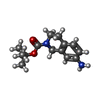Entry Database : PDB / ID : 6jioTitle Human LXR-beta in complex with a ligand Oxysterols receptor LXR-beta Keywords / Function / homology Function Domain/homology Component
/ / / / / / / / / / / / / / / / / / / / / / / / / / / / / / / / / / / / / / / / / / / / / / / / / / / / / / / / / / / / / / / / / / / / / / / / / / / / / / / / / / / / / / / / / / / / Biological species Homo sapiens (human)Method / / / Resolution : 2.6 Å Authors Zhang, Z. / Zhou, H. Funding support Organization Grant number Country National Science Foundation (China) 81773636
Journal : Eur.J.Med.Chem. / Year : 2019Title : Identify liver X receptor beta modulator building blocks by developing a fluorescence polarization-based competition assay.Authors : Zhang, Z. / Chen, H. / Chen, Z. / Ding, P. / Ju, Y. / Gu, Q. / Xu, J. / Zhou, H. History Deposition Feb 22, 2019 Deposition site / Processing site Revision 1.0 Oct 16, 2019 Provider / Type Revision 1.1 Nov 22, 2023 Group / Database references / Refinement descriptionCategory chem_comp_atom / chem_comp_bond ... chem_comp_atom / chem_comp_bond / database_2 / pdbx_initial_refinement_model Item / _database_2.pdbx_database_accession
Show all Show less
 Open data
Open data Basic information
Basic information Components
Components Keywords
Keywords Function and homology information
Function and homology information Homo sapiens (human)
Homo sapiens (human) X-RAY DIFFRACTION /
X-RAY DIFFRACTION /  SYNCHROTRON /
SYNCHROTRON /  MOLECULAR REPLACEMENT / Resolution: 2.6 Å
MOLECULAR REPLACEMENT / Resolution: 2.6 Å  Authors
Authors China, 1items
China, 1items  Citation
Citation Journal: Eur.J.Med.Chem. / Year: 2019
Journal: Eur.J.Med.Chem. / Year: 2019 Structure visualization
Structure visualization Molmil
Molmil Jmol/JSmol
Jmol/JSmol Downloads & links
Downloads & links Download
Download 6jio.cif.gz
6jio.cif.gz PDBx/mmCIF format
PDBx/mmCIF format pdb6jio.ent.gz
pdb6jio.ent.gz PDB format
PDB format 6jio.json.gz
6jio.json.gz PDBx/mmJSON format
PDBx/mmJSON format Other downloads
Other downloads 6jio_validation.pdf.gz
6jio_validation.pdf.gz wwPDB validaton report
wwPDB validaton report 6jio_full_validation.pdf.gz
6jio_full_validation.pdf.gz 6jio_validation.xml.gz
6jio_validation.xml.gz 6jio_validation.cif.gz
6jio_validation.cif.gz https://data.pdbj.org/pub/pdb/validation_reports/ji/6jio
https://data.pdbj.org/pub/pdb/validation_reports/ji/6jio ftp://data.pdbj.org/pub/pdb/validation_reports/ji/6jio
ftp://data.pdbj.org/pub/pdb/validation_reports/ji/6jio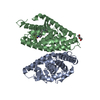
 Links
Links Assembly
Assembly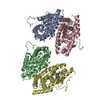
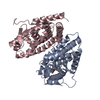
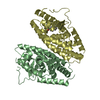
 Components
Components Homo sapiens (human) / Gene: NR1H2, LXRB, NER, UNR / Production host:
Homo sapiens (human) / Gene: NR1H2, LXRB, NER, UNR / Production host: 
 X-RAY DIFFRACTION / Number of used crystals: 1
X-RAY DIFFRACTION / Number of used crystals: 1  Sample preparation
Sample preparation SYNCHROTRON / Site:
SYNCHROTRON / Site:  SSRF
SSRF  / Beamline: BL19U1 / Wavelength: 0.9791 Å
/ Beamline: BL19U1 / Wavelength: 0.9791 Å Processing
Processing MOLECULAR REPLACEMENT
MOLECULAR REPLACEMENT Movie
Movie Controller
Controller



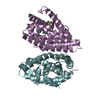
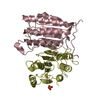
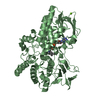
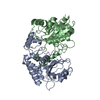

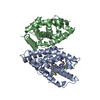
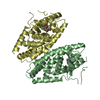
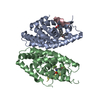
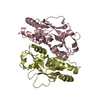
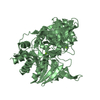
 PDBj
PDBj



